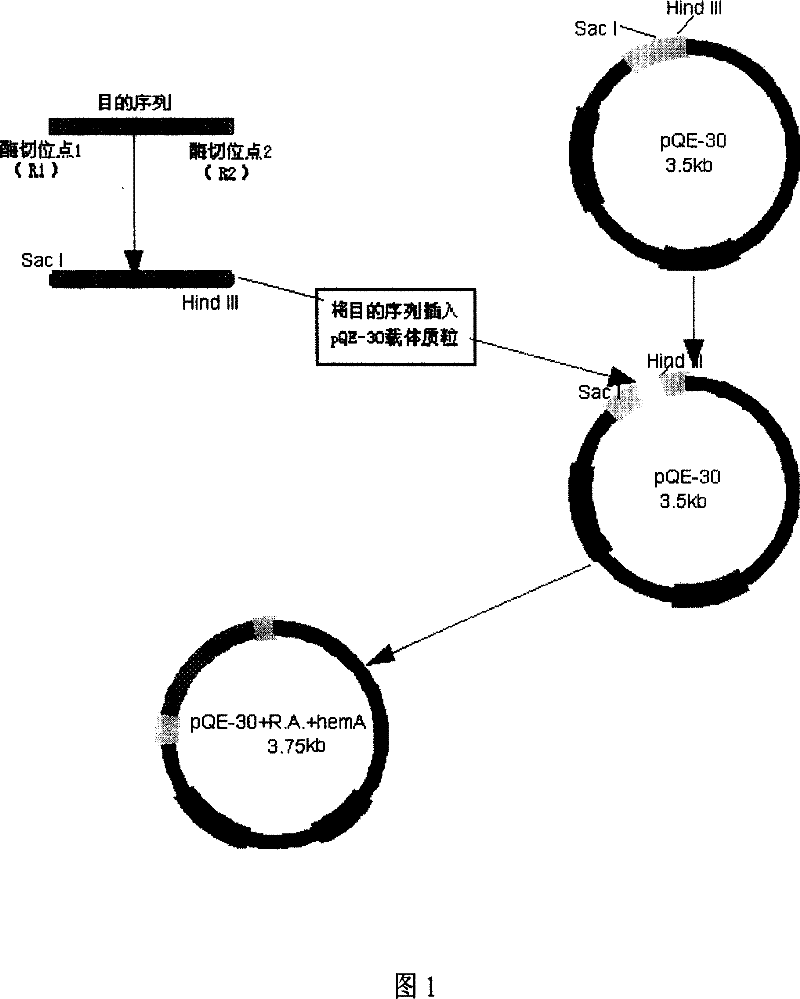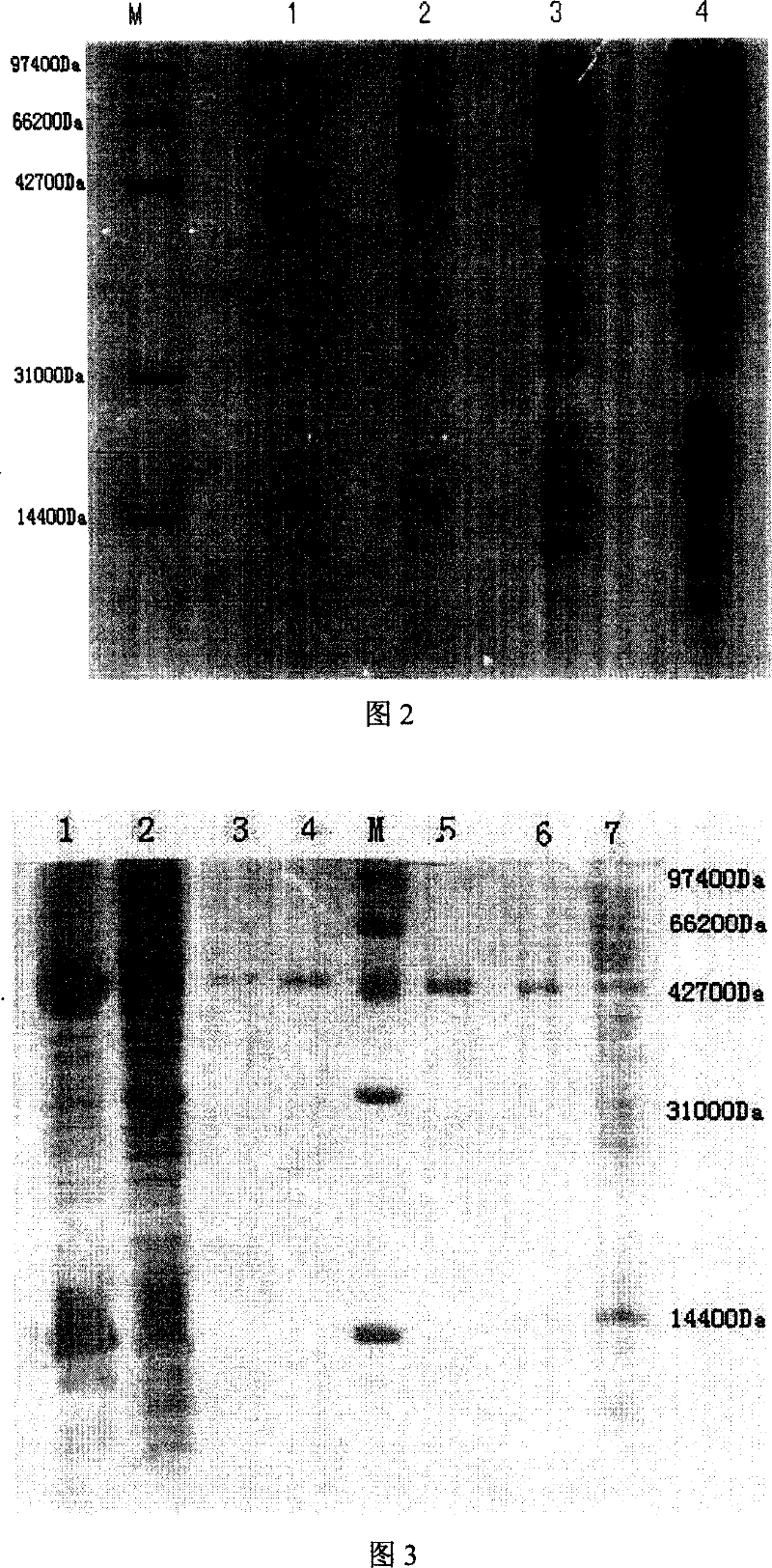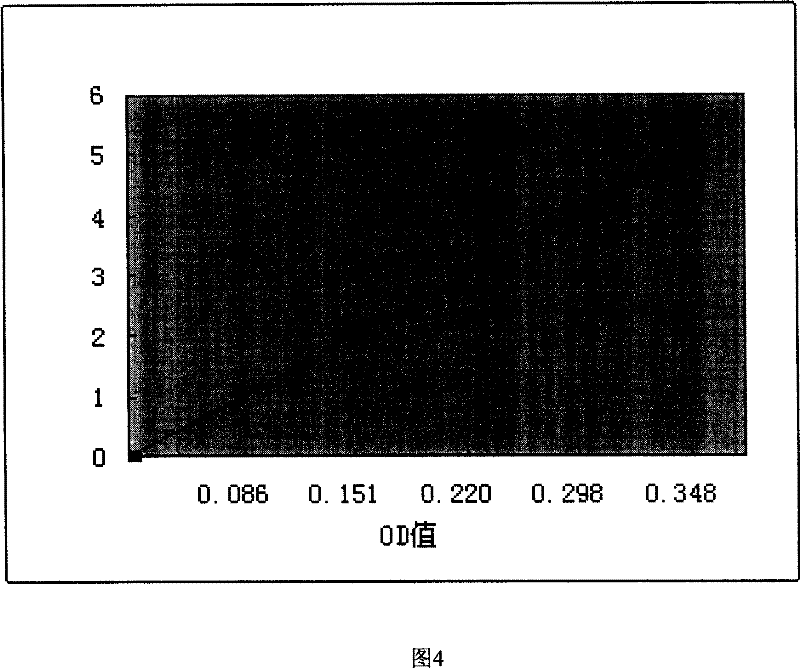Culture method engineering bacterium capable of producing 5-amino acetyl propionic acid in high yield
A kind of technology of aminolevulinic acid and culture method, applied in the field of genetic engineering
- Summary
- Abstract
- Description
- Claims
- Application Information
AI Technical Summary
Problems solved by technology
Method used
Image
Examples
Embodiment 1
[0031]Construction and cultivation of Escherichia coli BL21 (DE3) engineering bacteria producing 5-aminolevulinic acid:
[0032] 1. Extraction of Genomic DNA from Acidophilus Plareriae
[0033] The liquid-cultured Acidophilus paladin was collected by centrifugation, and the DNA was extracted by the CTAB method, and the concentration and integrity of the DNA were detected by agarose. The specific operation is as follows:
[0034] 1). Inoculate the liquid culture medium (1% inoculum size, seal the culture bottle after the culture medium is filled) with acidophilic Rhodobacter paella PSB-1 strain (CCTCC M 206124) and carry out light culture (30°C, light intensity 2000Lx, 7d ). The liquid medium components are: sodium acetate 1640mg / L, MgSO 4 ·7H 2 O 200mg / L, K 2 HPO 4 900mg / L, KH 2 PO 4 600mg / L, CaCl 2 2H 2 O 75mg / L, EDTA 20mg / L, (NH 4 ) 2 SO 4 1320mg / L, FeSO 4 ·7H 2 O 11.8mg / L, trace element solution 1mL / L, pH6.8 (adjusted with NaOH), trace element solution: ...
Embodiment 2
[0069] Construction and cultivation of engineering bacteria producing 5-aminolevulinic acid Escherichia coli M15[PREP4]:
[0070] The basic method is the same as above, the difference is:
[0071] 1). The primers used in the cloning of the ALA synthetase gene are as follows:
[0072] F: 5'-ATTTGAGCTCGGTGCCGTTCTAC-3'
[0073] R: 5'-ACAGTAAGCTTAACTTATTCCGCAGC-3'
[0074] The amplification program was pre-denaturation at 94°C for 5 minutes, denaturation at 94°C for 45 seconds, annealing at 55°C for 60 seconds, extension at 72°C for 60 seconds, 35 cycles, and a final extension of 10 minutes. Detected by 1.0% agarose gel electrophoresis, it showed a single band at 1700bp.
[0075] 2). In the construction of the ALAS gene prokaryotic expression vector, the expression vector was named pQE30-R.A2-hemA. The host bacterium used was M15[PREP4], and the transformed product was cultured on LB plates containing 100 μg / L ampicillin and 50 μg / L kanamycin. The engineering bacterium contai...
Embodiment 3
[0078] Construction and cultivation of engineering bacteria producing 5-aminolevulinic acid Escherichia coli M15[PREP4]:
[0079] The basic method is the same as above, the difference is:
[0080] 1). The primers used in the cloning of the ALA synthetase gene are as follows:
[0081] F: 5'-ATTTGAGCTCGGTGCCGTTCTAC-3'
[0082] R: 5'-AGAATAAGCTTGCAGCGAGGACG-3'
[0083] The amplification program was pre-denaturation at 94°C for 3 minutes, denaturation at 94°C for 30 seconds, renaturation at 55°C for 2 minutes, extension at 72°C for 2 minutes, 30 cycles, and a final extension of 10 minutes. The PCR product was detected by 1.0% agarose gel electrophoresis, showing a single band at 2550bp.
[0084] 2). In the construction of the ALAS gene prokaryotic expression vector, the expression vector was named pQE30-R.A3-hemA. The host strain used was M15[PREP4]. Transformation products were spread on LB plates containing 100 μg / L ampicillin and 50 μg / L kanamycin for culture. The enginee...
PUM
 Login to View More
Login to View More Abstract
Description
Claims
Application Information
 Login to View More
Login to View More - Generate Ideas
- Intellectual Property
- Life Sciences
- Materials
- Tech Scout
- Unparalleled Data Quality
- Higher Quality Content
- 60% Fewer Hallucinations
Browse by: Latest US Patents, China's latest patents, Technical Efficacy Thesaurus, Application Domain, Technology Topic, Popular Technical Reports.
© 2025 PatSnap. All rights reserved.Legal|Privacy policy|Modern Slavery Act Transparency Statement|Sitemap|About US| Contact US: help@patsnap.com



